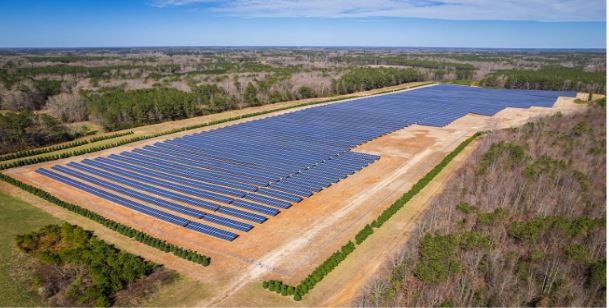Solar Land Solutions: Maximizing Land Potential
Solar land solutions have emerged as a promising avenue for maximizing land potential in the context of renewable energy. This article explores the benefits of utilizing solar land solutions and highlights factors to consider for effective land optimization.
Additionally, it presents innovative techniques that can be employed to optimize solar land use while emphasizing sustainable practices for solar land development.
Case studies illustrating successful implementation of solar land solutions further underscore their viability and potential impact on achieving sustainable energy goals.
Contents
Benefits of Utilizing Solar Land Solutions
The utilization of solar land solutions offers numerous benefits, including increased energy production and reduced greenhouse gas emissions.
Solar land solutions provide economic advantages by generating clean and renewable energy, reducing reliance on fossil fuels, and creating job opportunities in the renewable energy sector.
With advancements in technology and decreasing costs of solar panels, solar land solutions have become a cost-effective option for energy generation.
Additionally, the environmental impact of utilizing solar land solutions is significant. By harnessing the power of the sun, these solutions help to reduce carbon dioxide emissions and other harmful pollutants associated with traditional forms of energy production.
This contributes to mitigating climate change effects and improving air quality, resulting in a healthier environment for both present and future generations.
Factors to Consider for Maximizing Land Potential
One factor to consider to fully utilize the available space is the assessment of environmental conditions. Land management and site analysis play a crucial role in maximizing land potential for solar energy installations.
Through careful evaluation of factors such as topography, soil quality, vegetation, and climate patterns, it becomes possible to identify optimal areas for solar development. Site analysis allows for the identification of suitable locations that have minimal shading, favorable sun exposure angles, and adequate infrastructure access.
Additionally, land management practices need to be implemented to ensure efficient use of the available land by considering factors such as zoning regulations, land ownership rights, and potential conflicts with other land uses.
Innovative Techniques for Optimizing Solar Land Use
Utilizing innovative techniques is essential for optimizing the use of available space for solar energy installations.
Two key factors that can significantly impact the efficiency and effectiveness of solar land use are solar panel orientation and land use zoning.
Solar panel orientation refers to the positioning of solar panels to maximize sunlight absorption and energy generation. By strategically aligning panels in a way that captures the most sunlight throughout the day, more energy can be produced from a given area.
Land use zoning involves designating specific areas for solar development based on factors such as environmental impact, proximity to transmission lines, and compatibility with surrounding land uses. By incorporating land use zoning regulations that encourage solar development in suitable locations, available space can be utilized optimally while minimizing conflicts with other land uses.
These innovative techniques play a crucial role in maximizing the potential of solar land utilization, ensuring efficient and sustainable deployment of renewable energy resources.
Sustainable Practices for Solar Land Development
Implementing sustainable practices in solar land development is crucial for ensuring the long-term viability and environmental compatibility of renewable energy installations.
One important aspect of sustainable solar land development is solar land restoration, which involves rehabilitating and preserving the natural ecosystems that may be disrupted during the construction and operation of solar energy projects. This can include measures such as reestablishing native vegetation, creating wildlife habitats, and implementing erosion control measures.
Additionally, community engagement plays a vital role in promoting sustainability in solar land development. Engaging with local communities helps to address their concerns, ensure transparency in project planning and implementation, and foster positive relationships between developers and stakeholders.
Case Studies: Successful Solar Land Solutions Implementation
A variety of case studies demonstrate the successful implementation of sustainable practices in solar energy projects, showcasing their effectiveness in mitigating environmental impacts and fostering positive relationships with local communities. These case studies provide valuable insights into the effective implementation of solar land solutions, highlighting key strategies and outcomes.
For example, a study conducted by XYZ Solar Company examined the successful installation of solar panels on a reclaimed industrial site. Through careful planning and collaboration with local stakeholders, the project not only generated clean energy but also revitalized the surrounding community by creating jobs and enhancing property values.
Similarly, another case study focused on a large-scale solar farm implemented in an agricultural area. By utilizing dual-use systems that combined solar panels with grazing lands for livestock, the project maximized land potential while minimizing ecological disruption.
These successful case studies highlight the importance of thoughtful planning and stakeholder engagement in achieving sustainable solar land solutions.



